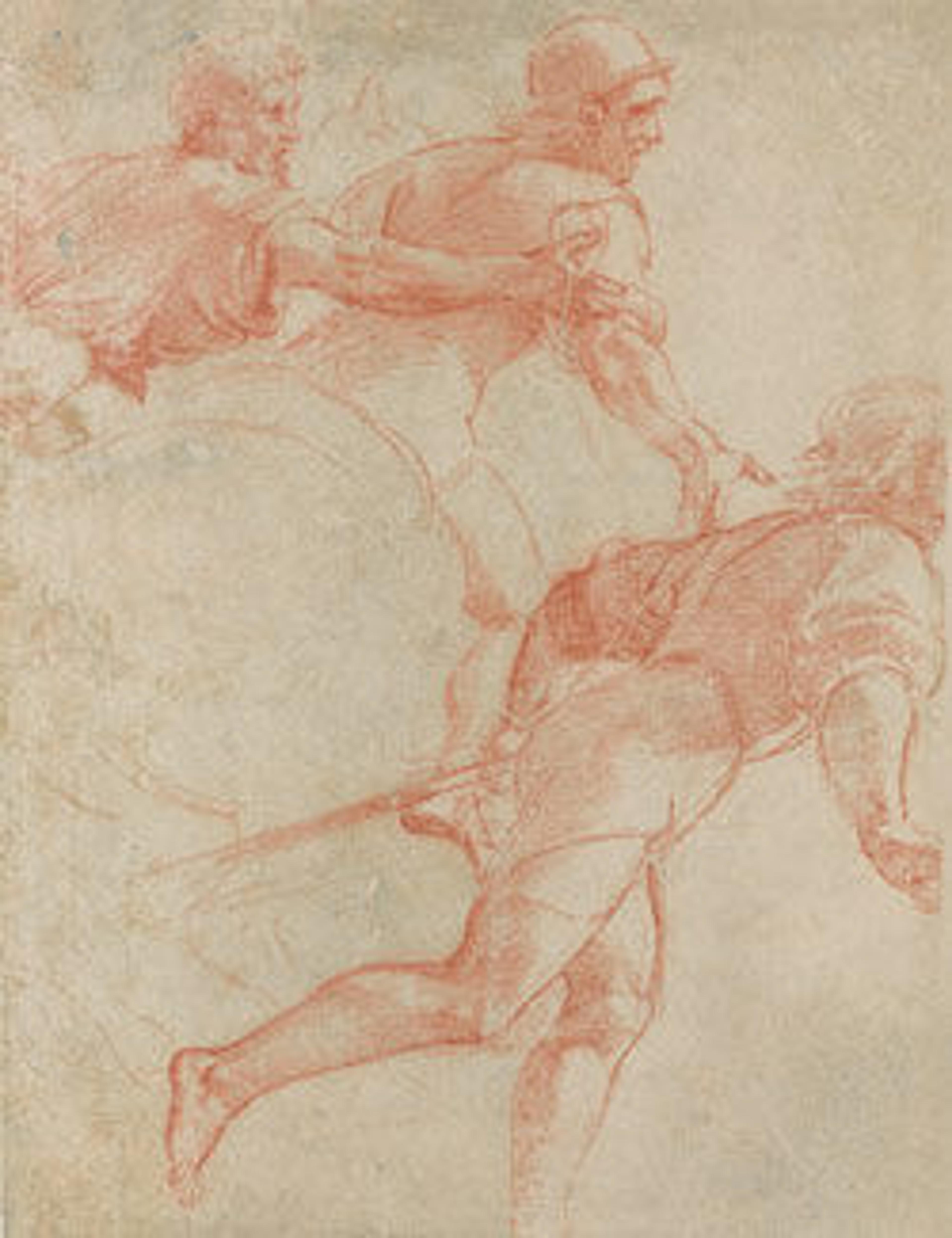The Ruins of Castle Merxem, near Antwerp
Jan Brueghel the Elder here depicted the ruins of Castle Merxem, located north of Antwerp. In this drawing, the artist captured the dilapidated state of the building that had been badly damaged in the recent years of political unrest.
An inscription by a later hand dates the drawing to 1610, which is not altogether out of place: the careful but confident drawing style indicates that the sheet will have been executed around 1600–10, just after Brueghel’s return from Rome. In Italy the artist had studied many antique monuments and ruins, and this possibly may have stimulated his interest in the intriguing remains of architectural structures from bygone eras, like this medieval castle of Merxem.
In rendering the outlines of the architecture, Brueghel used delicate and briskly interrupted short pen strokes. Shaded parts and modulations in the landscape, however, were added in much freer parallel hatching. The artist paid striking attention to detail, and seems to have made an effort to ensure the drawing was a truthful visual record of the site’s status quo: note for example the pieces of brick lying around, and three geese in the moat.
In his pen drawings, Brueghel often used watercolor to quickly suggest parts of his compositions. In this instance he reserved the blue, yellow and red hues to elaborate the most monumental part of the castle.
An inscription by a later hand dates the drawing to 1610, which is not altogether out of place: the careful but confident drawing style indicates that the sheet will have been executed around 1600–10, just after Brueghel’s return from Rome. In Italy the artist had studied many antique monuments and ruins, and this possibly may have stimulated his interest in the intriguing remains of architectural structures from bygone eras, like this medieval castle of Merxem.
In rendering the outlines of the architecture, Brueghel used delicate and briskly interrupted short pen strokes. Shaded parts and modulations in the landscape, however, were added in much freer parallel hatching. The artist paid striking attention to detail, and seems to have made an effort to ensure the drawing was a truthful visual record of the site’s status quo: note for example the pieces of brick lying around, and three geese in the moat.
In his pen drawings, Brueghel often used watercolor to quickly suggest parts of his compositions. In this instance he reserved the blue, yellow and red hues to elaborate the most monumental part of the castle.
Artwork Details
- Title: The Ruins of Castle Merxem, near Antwerp
- Artist: Jan Brueghel the Elder (Netherlandish, Brussels 1568–1625 Antwerp)
- Date: 1610
- Medium: Pen and brown ink with pink, blue, gray, and yellow washes
- Dimensions: Sheet: 6 1/2 x 12 5/16in. (16.5 x 31.2cm)
- Classification: Drawings
- Credit Line: Purchase, Anonymous Gift, in memory of Frits Markus, and Louis V. Bell and Harry G. Sperling Funds, 2001
- Object Number: 2001.638
- Curatorial Department: Drawings and Prints
More Artwork
Research Resources
The Met provides unparalleled resources for research and welcomes an international community of students and scholars. The Met's Open Access API is where creators and researchers can connect to the The Met collection. Open Access data and public domain images are available for unrestricted commercial and noncommercial use without permission or fee.
To request images under copyright and other restrictions, please use this Image Request form.
Feedback
We continue to research and examine historical and cultural context for objects in The Met collection. If you have comments or questions about this object record, please contact us using the form below. The Museum looks forward to receiving your comments.
